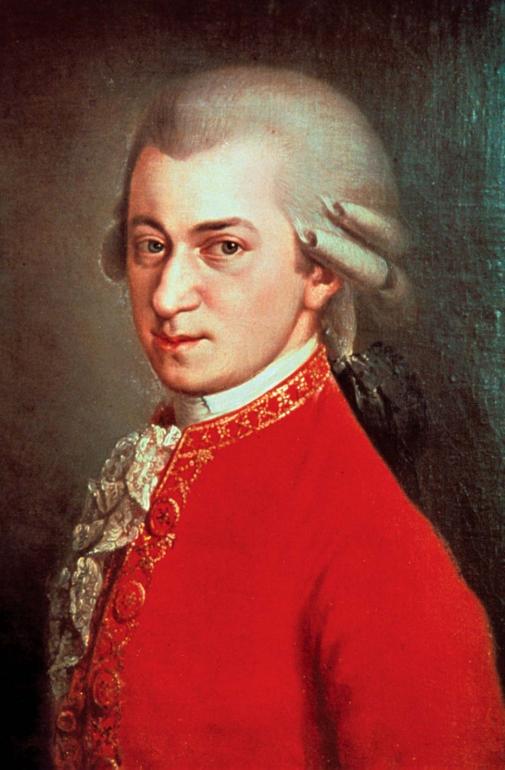
Recognized as one of the greatest composers of Western music, this Austrian genius wrote over 600 musical pieces since the age of five, many of which are masterpieces.
Born on January 27, 1756 in Salzburg (part of present-day Austria) to Leopold and Anna Maria Mozart. Wolfgang Amadeus Mozart showed prodigious musical skills as a child.
His father was a composer, teacher and chapel master in the court orchestra of Archbishop of Salzburg. Mozart was the youngest of seven children, five of whom died in infancy. His elder sister, Maria Anna Mozart, was nicknamed Nannerl. In his early years, his father was his only teacher.
Mozart made many journeys to Europe where he and Nannerl performed as child prodigies. By the time he was 5, Mozart began composing small pieces.
These began with an exhibition in 1762 at the court of Prince-elector Maximilian III of Bavaria in Munich and at the Imperial Courts in Vienna and Prague. A long concert tour spanning three and a half years took his family to almost many major European cities. During the trip, he met musicians and acquainted himself with the works of other composers.
Career
In 1767, Mozart composed a Latin Drama and performed at Salzburg University. Two years later, during a visit to Italy with his father, Mozart met GB Martini in Bologna and joined the reputed Accademia Filarmonica. In Milan, he wrote the opera Mitridate, re di Ponto (Mithridates, King of Pontus) in 1770 and performed it. Later, he visited Milan in 1771, 1772, and 1773 for the premiers of Ascanio in Alba and Lucio Silla. By the end of the journey, he wrote his first work titled Exsultate, jubilate.
In 1773, Mozart was appointed to the court of Prince-Archbishop Hieronymus Colloredo, the ruler of Salzburg. During that period, he produced path-breaking concertos involving the violin and piano. Accompanied by his father, he visited Vienna and Munich which resulted in a premiere of his opera La Finta Giardiniera.
Mozart began working in diverse genres including symphonies, sonatas, string quartets, and minor operas. In 1777, he traveled to places such as Augsburg, Mannheim, Paris and Munich. In 1778, his mother passed away and Mozart was again offered the job as court organist and concert master in Salzburg. Between 1782 and 1783, he became familiar with the works of Johann Sebastian Bach and George Frideric Handel. It inspired him to compose in the baroque style and eventually aided him in the development of his unique musical language. In 1783, he composed one of his greatest pieces, Mass in C minor. In his final years in Vienna, Mozart composed many of his best-known symphonies, concertos, and operas and portions of the Requiem, which was largely unfinished when he died prematurely on December 5, 1791, aged just 35.
Though Mozart lived only for three and a half decades, his legacy among composers who hold a special place in music is unparalleled.
Personal life and legacy
In 1782, Mozart married Constanze. The couple had six children, and only two survived. In 1791, he fell ill during the premiere of the Opera La clemenza di Tito in 1791. Mozart continued to make public appearances but his health continued to deteriorate. While the cause of his death remains unclear, researchers have listed at least 118 probable causes for it.
Mozart’s modest funeral did not reflect his standing with the public as a composer; memorial services and concerts in Vienna and Prague were well-attended. After his death, his reputation and fame began to rise substantially.
INTERESTING FACTS
1. Mozart’s early talent for music was remarkable. At three, he was picking out chords on the harpsichord, at 4, he played short pieces, and at 5, began composing and performed for the European royalty.
2. He enjoyed billiards ,dancing and kept pets. He had a canary, a starling, a dog and a horse for recreational riding. He had a fondness for scatological humour which is preserved in his letters.
3. Duettino-Sull’aria, one of Mozart’s most popular operas titled The Marriage of Figaro, features in the film The Shawshank Redemption. The duet is scored for oboe, bassoon, and strings.
4. On January 27, 2006, all the church bells in Salzburg were rung simultaneously at the exact hour of his birth, in honour of his 250th birthday. Mozart was baptised at St. Rupert’s Cathedral in Salzburg.
5. The Mozart Monument is a monument located in the Burggarten in the Innere Stadt district of Vienna, Austria since 1953. It is dedicated to the composer. It is a 7.5- meter high statue.
Source: wikipedia, britannica.com, thefamouspeople.com, classicfm.com



